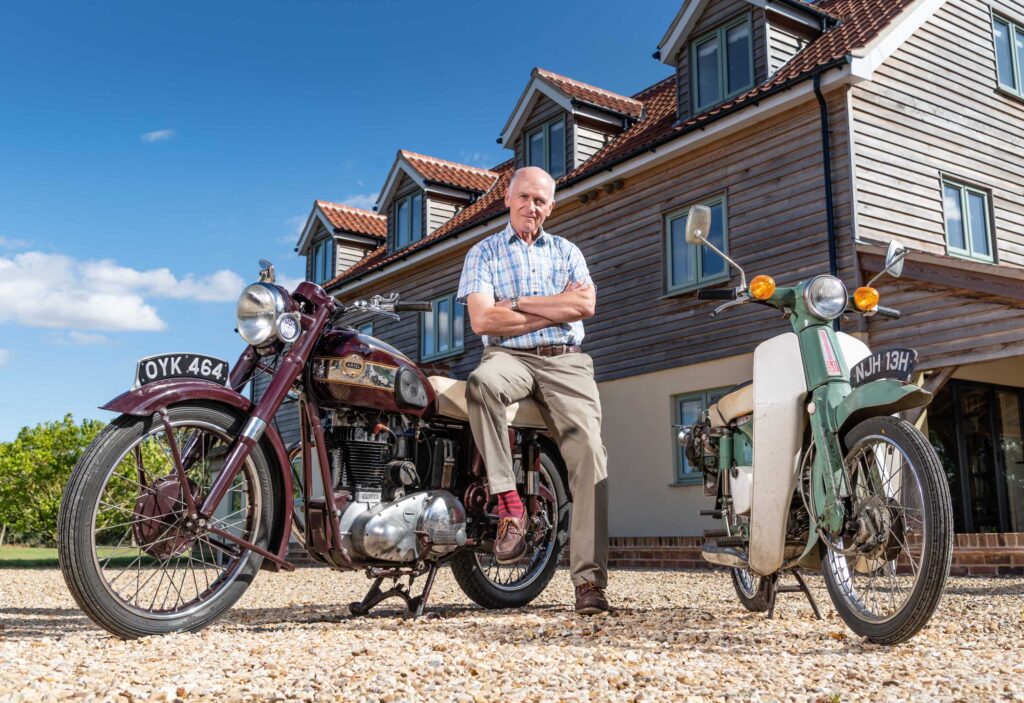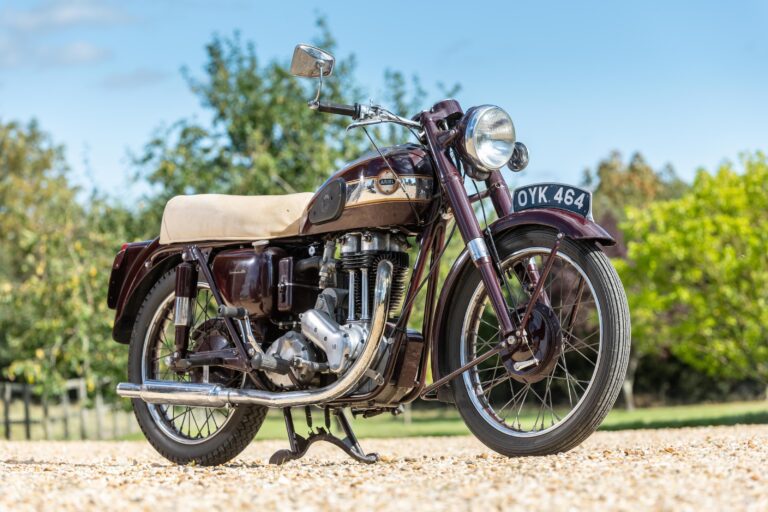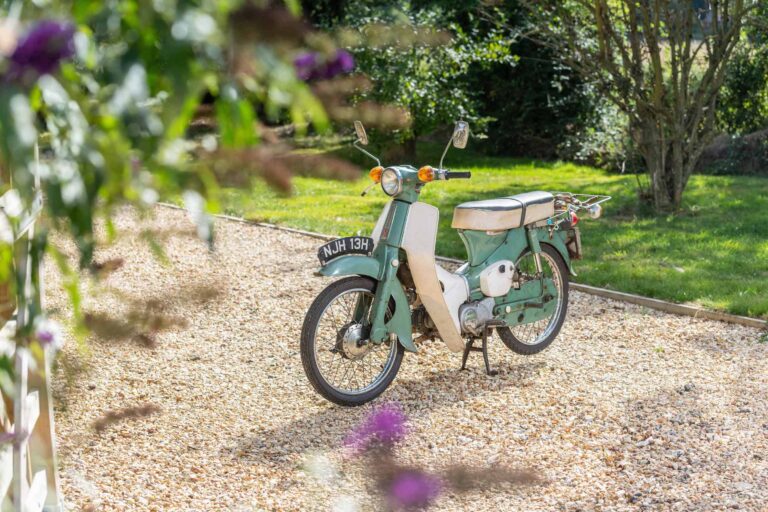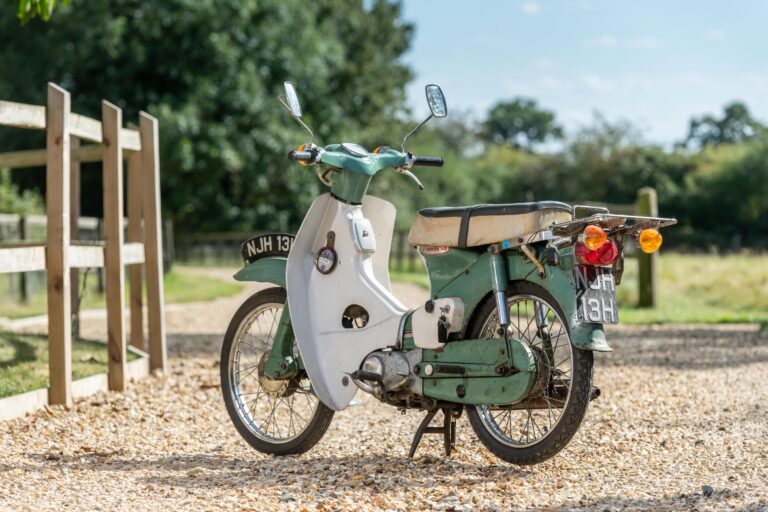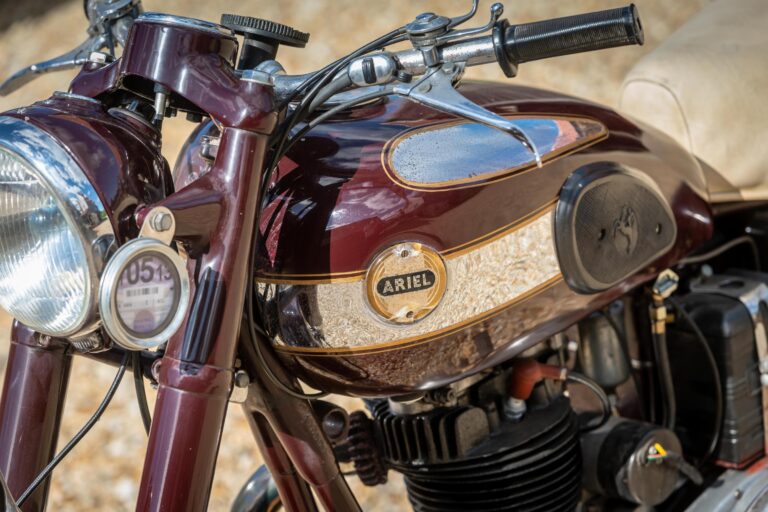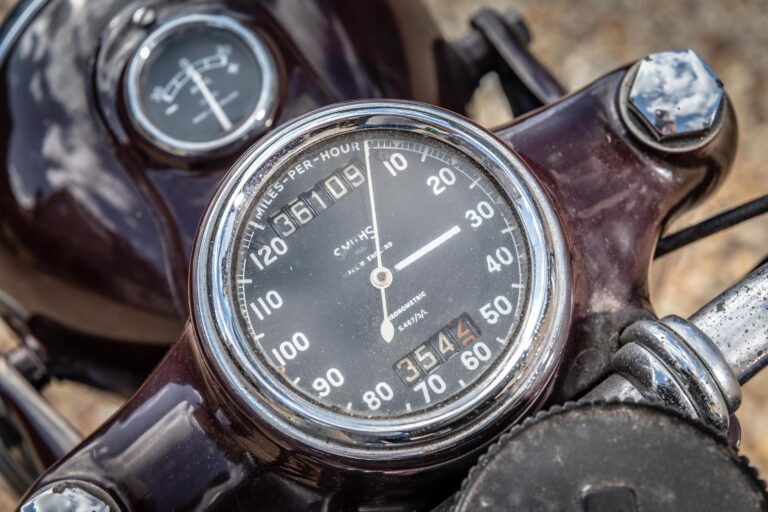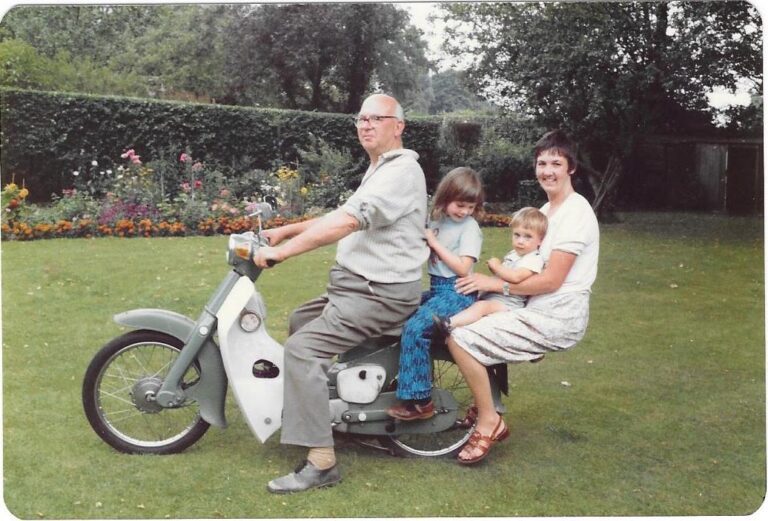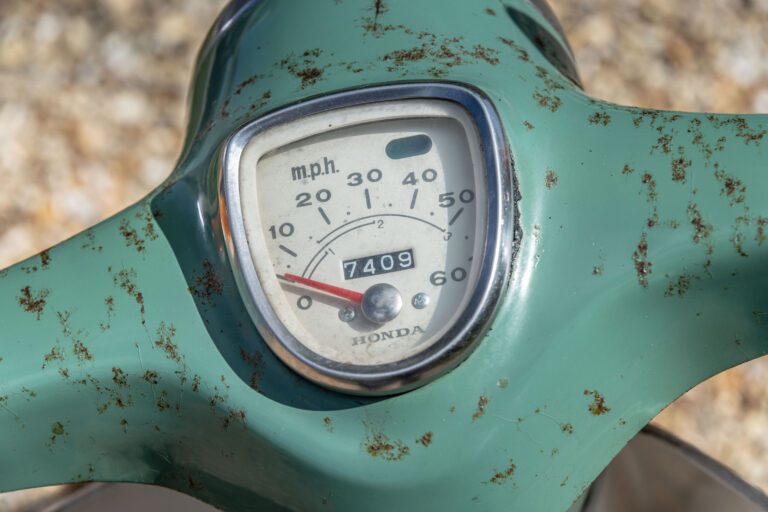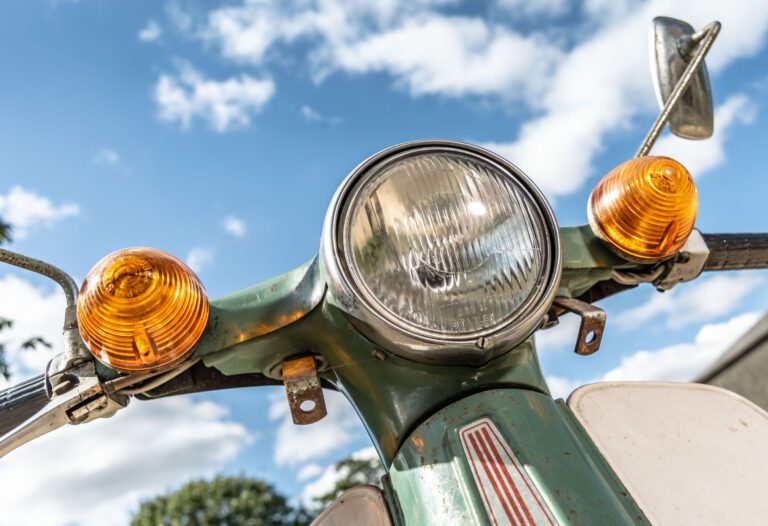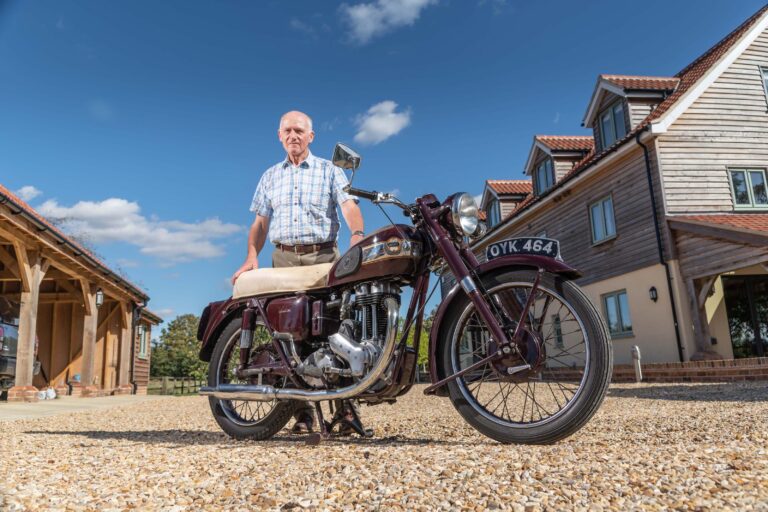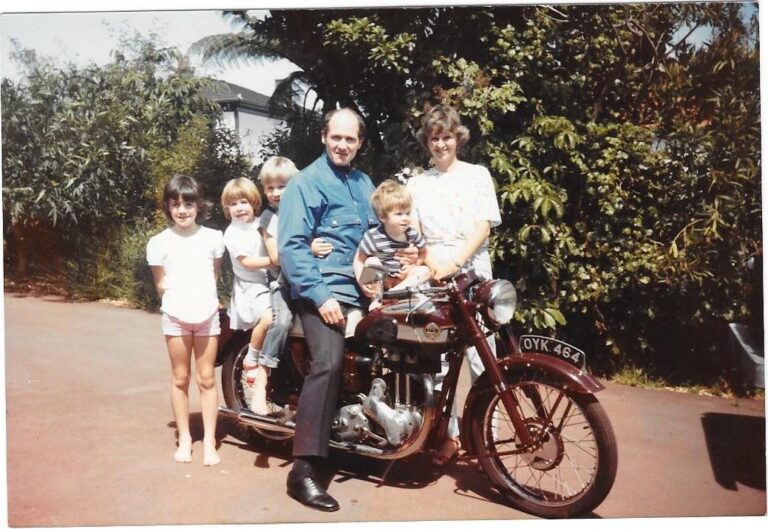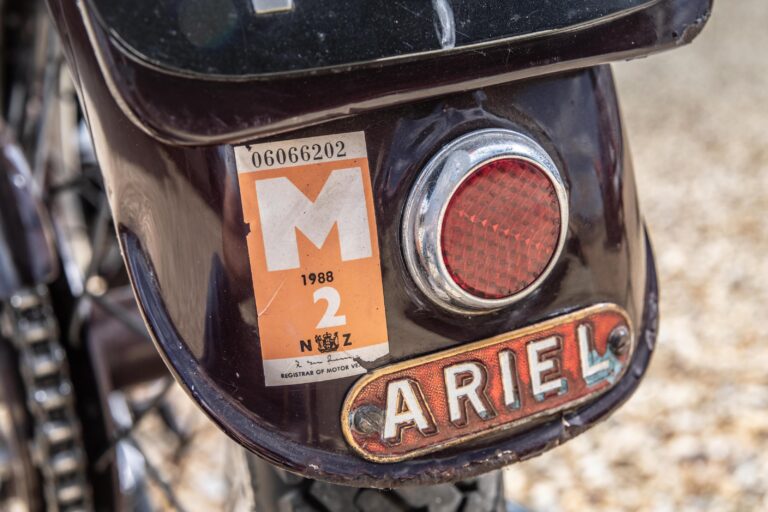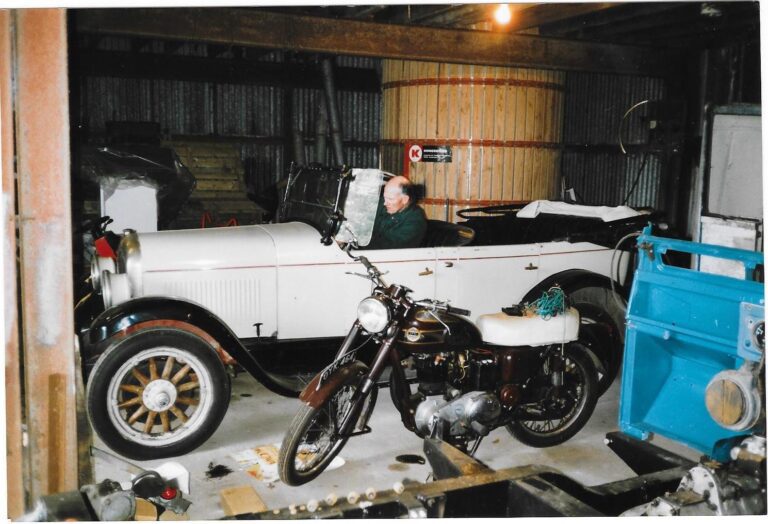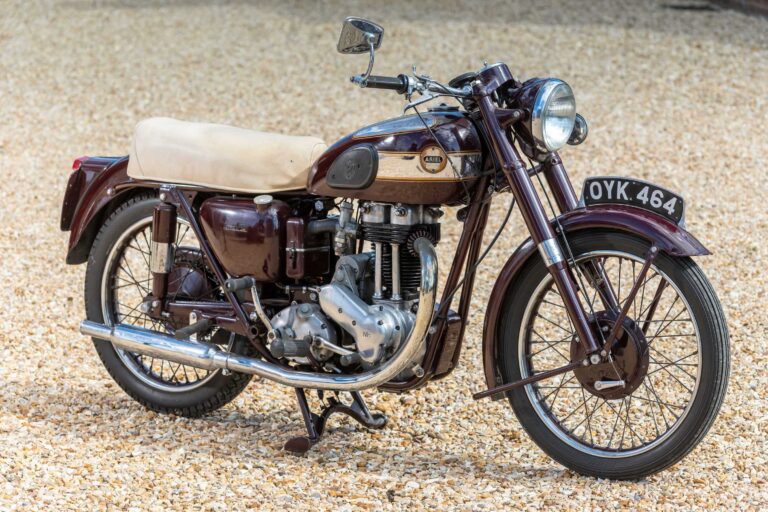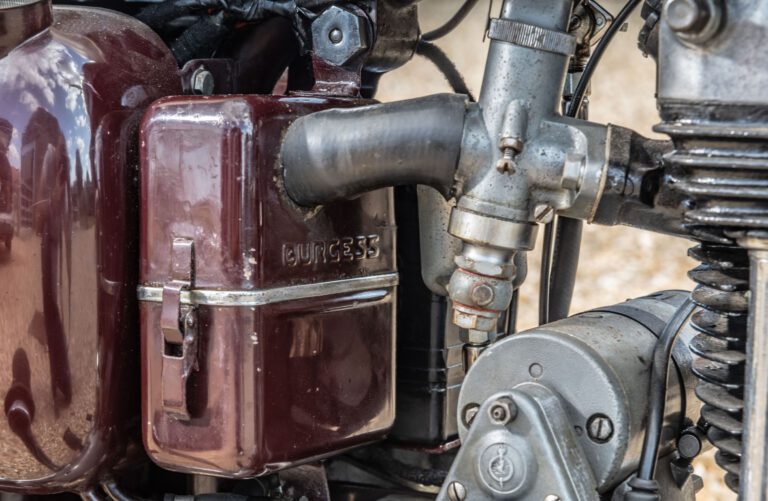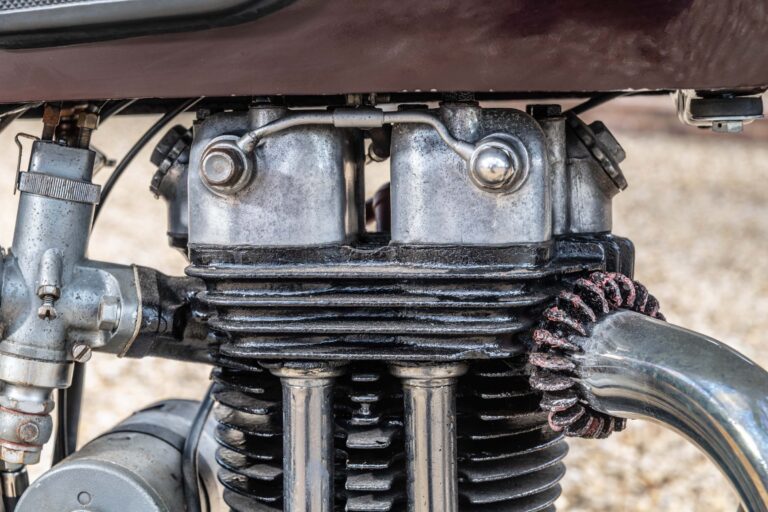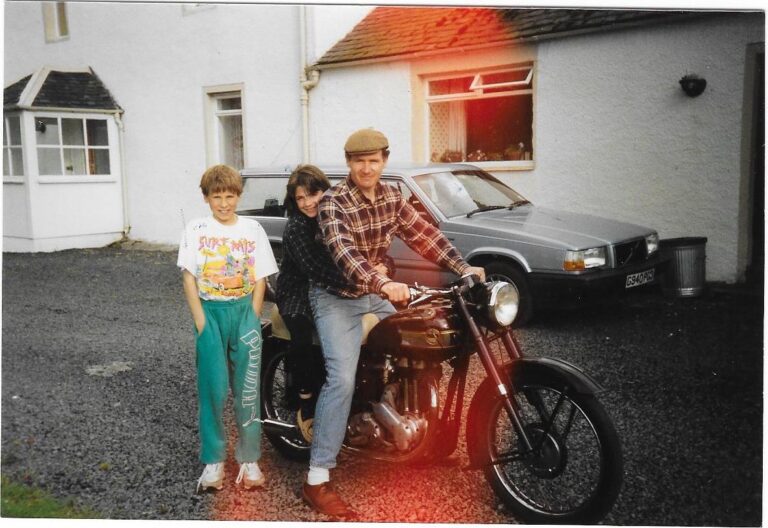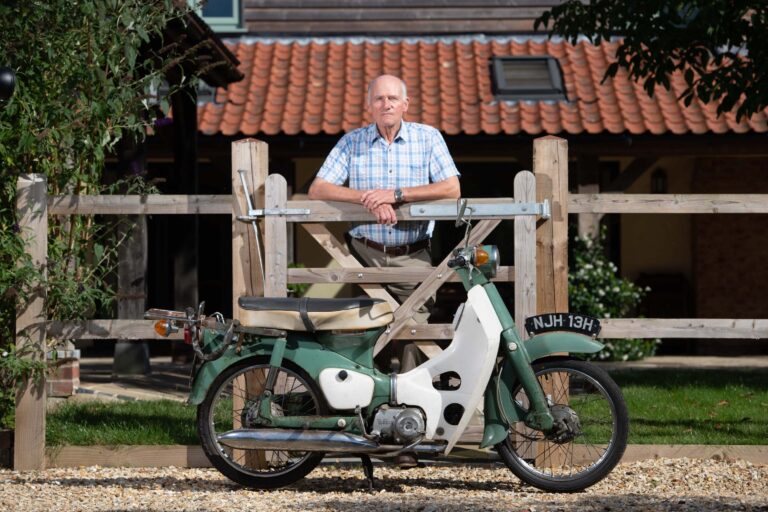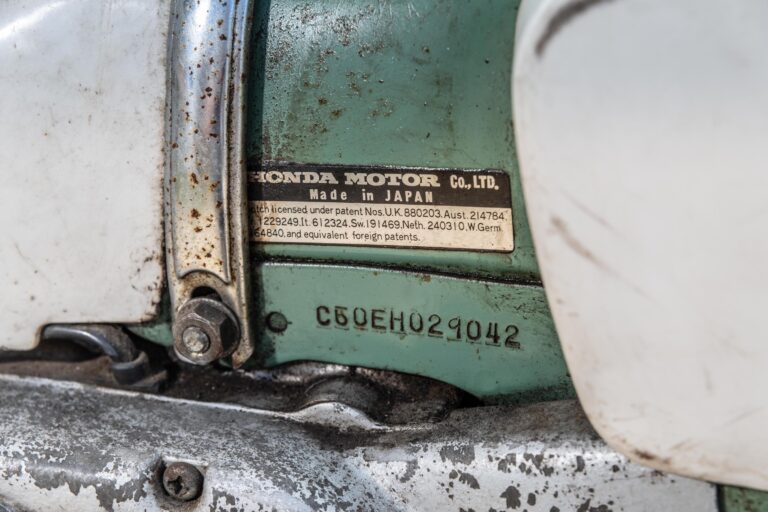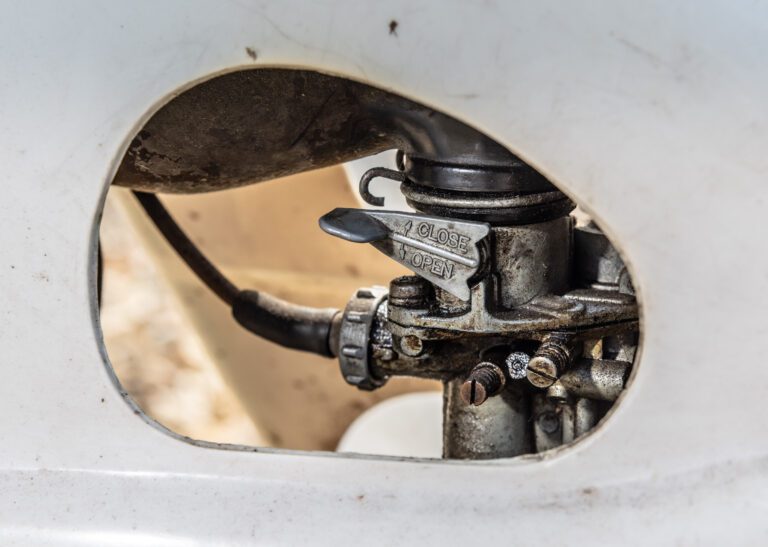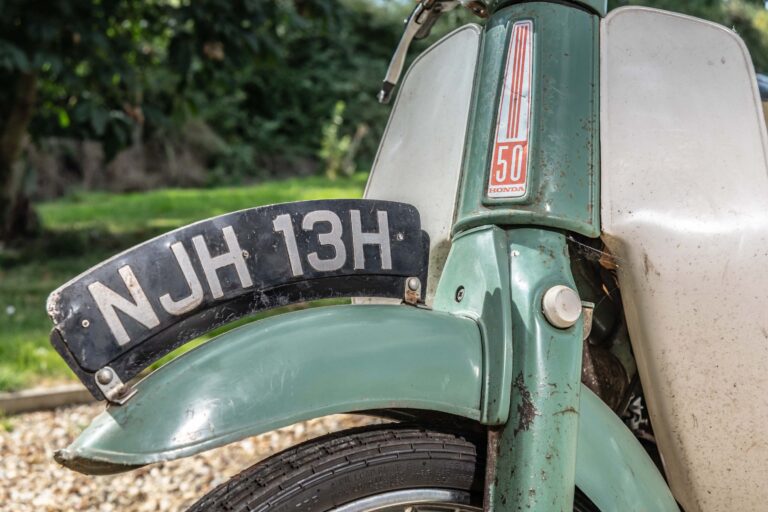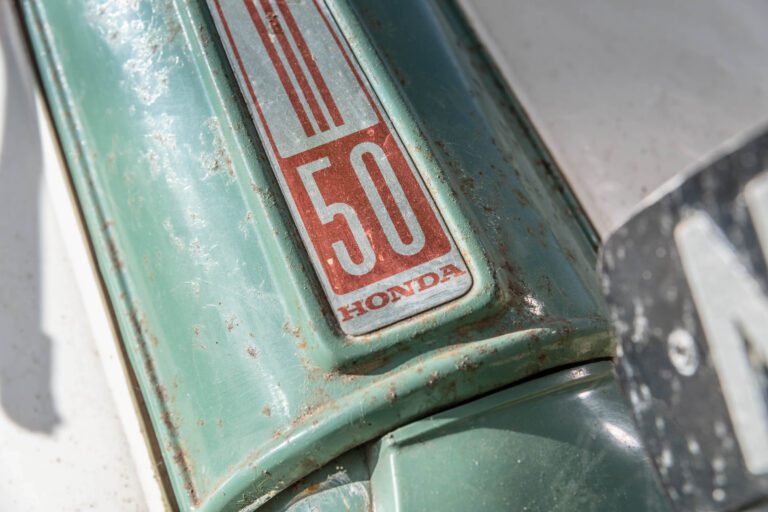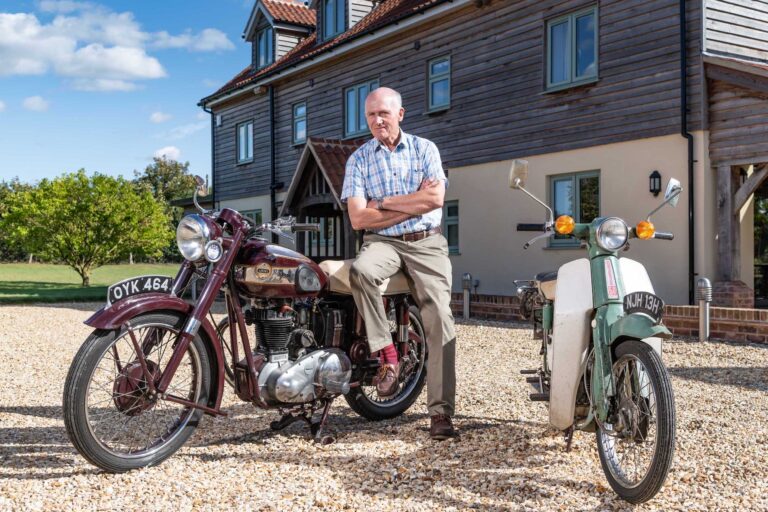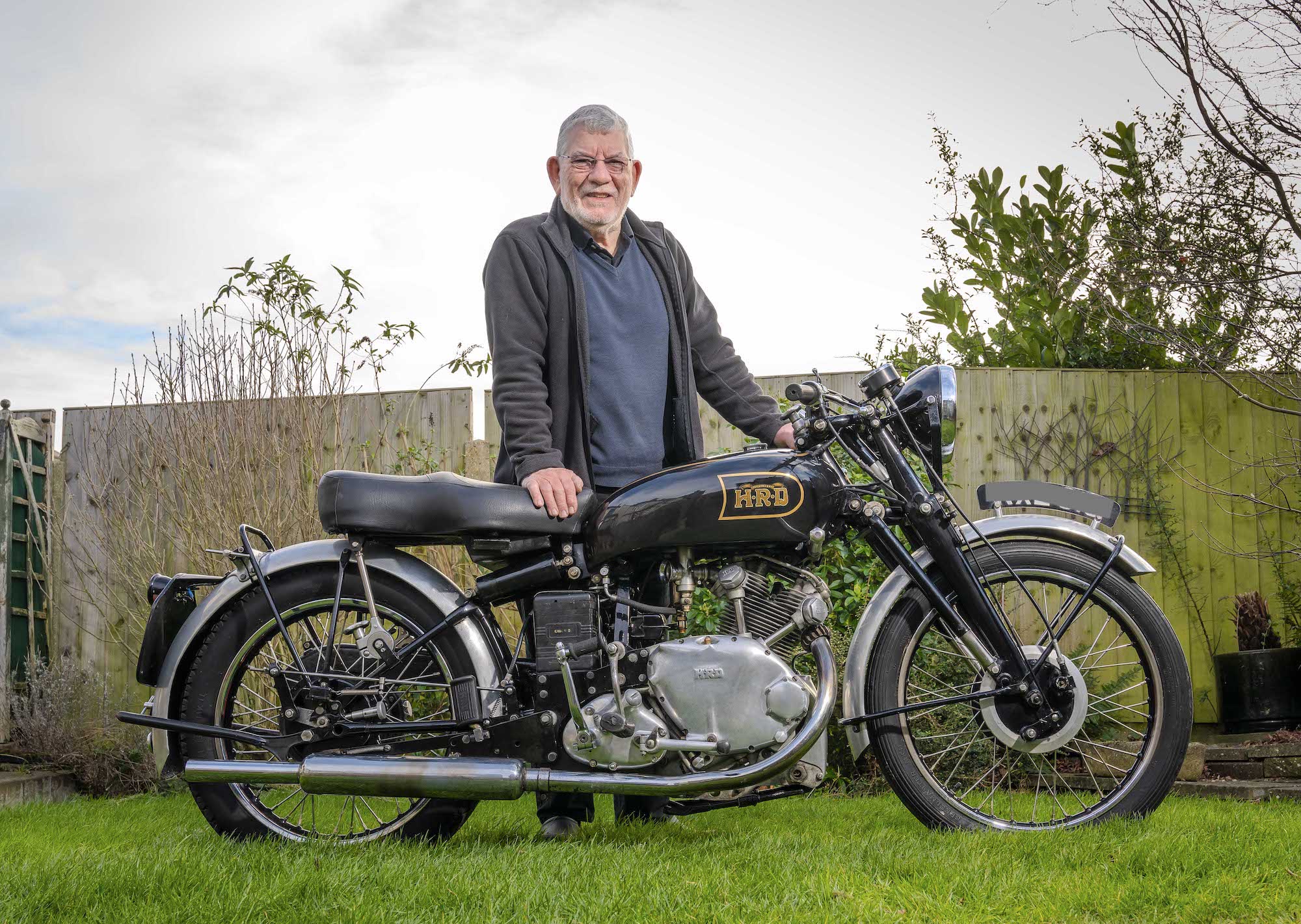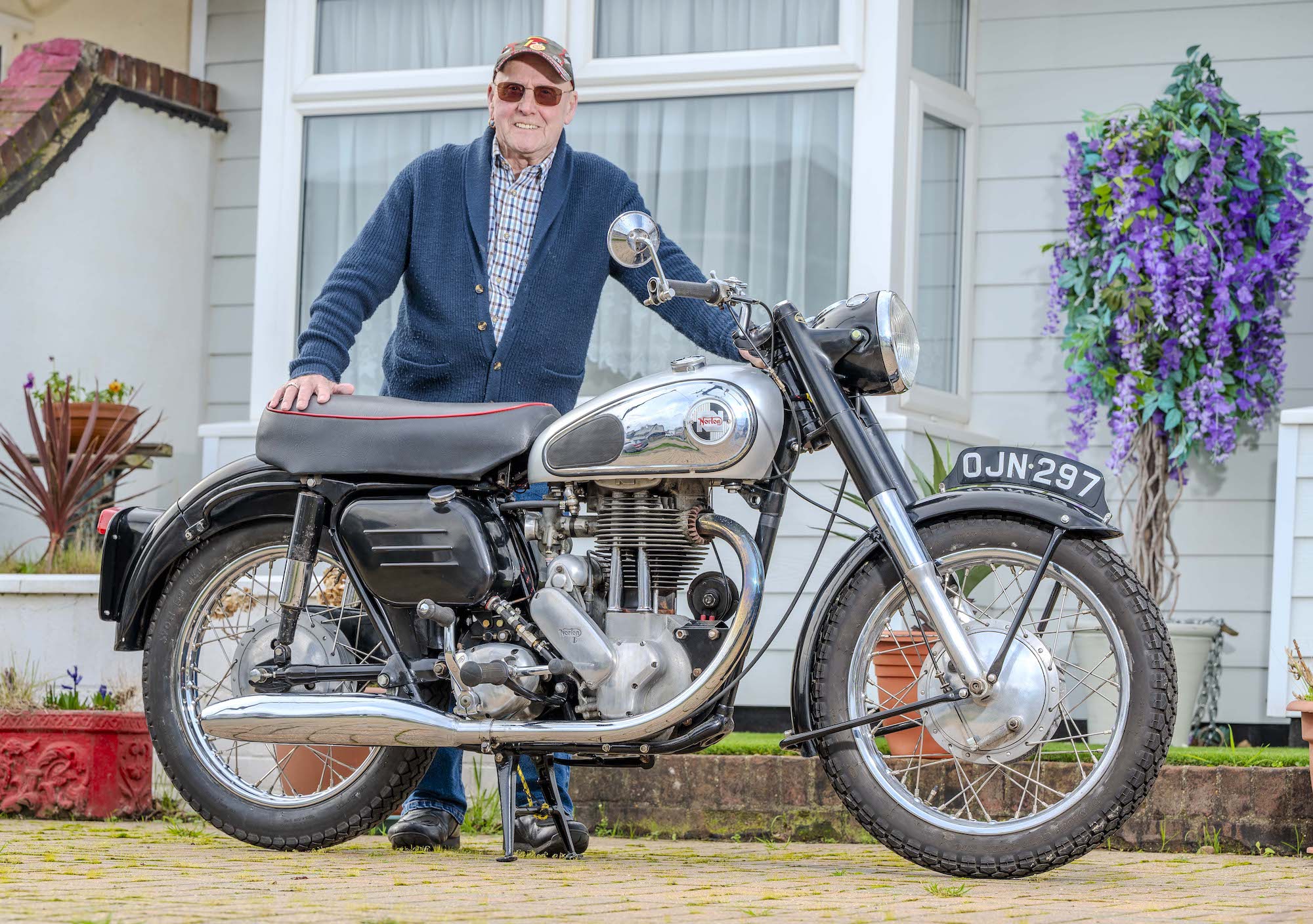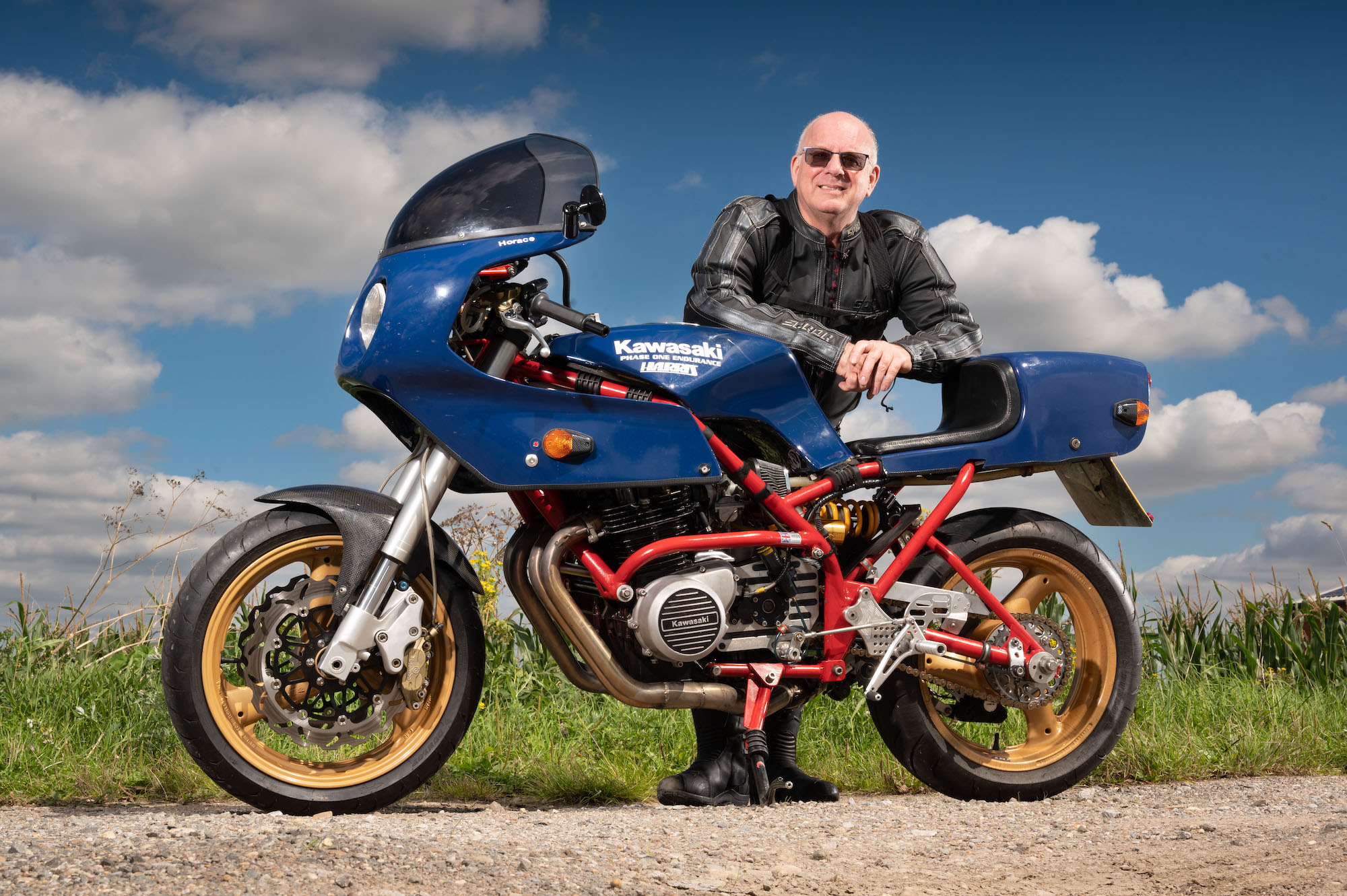Robin Morris has five motorbikes, five cars, a boat, a couple of tractors, a collection of about 40 outboard motors, and a stunning modern farmhouse set in 16 acres of land.
But of all these possessions, two mean more to him than all the rest – a humble Honda C50 originally owned by his father, and an Ariel Red Hunter bought for him by his mother.
They represent a treasured connection to the past, to his parents who, each in their own way, shaped his love of motorbikes, and how they work.
From his father, Colin, a railway engineer, Robin was imbued with a mechanical bent, a desire to find out how things work and fix them.
And from his mother, Freda, who rode motorbikes before and during the war and also drove heavy trucks as a Wren in wartime, his fascination with two wheels.
Honda C50 and Ariel Red Hunter bring back memories
The Honda and the Ariel, so different in their approach to style and engineering, bring back memories of both, and Robin hopes both bikes will remain in the family for years to come once his time on the road hits a permanent red light.
“The biggest factor is how much longer I can have a driving licence,” says Robin, 73. “The bikes will carry on with me for as long as I’m able to ride them.
“I hope there’s someone who can appreciate that the Honda is something of a family heirloom, and hopefully the Ariel, part of the family history and heritage, will find a place in the family.”
Of his four children and 10 grandchildren, Robin’s eldest son, a Typhoon fighter pilot and a biker like his father, seems the most likely recipient.
“His generation doesn’t understand advance and retard, or a choke,” he smiles. “Despite the fact that he can fly a Typhoon and do amazing things with it, can I teach him how a choke works?”
It was all rather different in Robin’s day, spending his youth working on cars with his father, an apprentice to the great steam engineer Sir Nigel Gresley, who designed the legendary Flying Scotsman and Mallard locomotives.
“Ironically, my father loathed steam engines, but I acquired his skills, his tools and learned all the techniques,” says Robin, who was born near Brentwood in Essex, but only lived there for 10 days before moving around the country with his father’s work, with stops at Norwich, Cambridge and Welwyn Garden City.
It was while at Welwyn that Robin bought his first bike, passing his test on his 16th birthday and buying a 250cc BSA C10.
“My mother was very relaxed about it, while my father was extraordinarily good at looking after them,” he says. “All the breakages and breakdowns, he would do.”
The bedside BSA
“I slept on the ground floor and my mother let me have the BSA alongside my bed, as long as I had a drip tray underneath it. I could reach out at night and touch it.”
After six months, Robin moved on to a 500cc Matchless before buying a three-wheeled Morgan, which he could ride at 16 on a motorbike licence because it had no reverse gear.
On leaving school, Robin was accepted by British Overseas Airways Corporation, now British Airways, to train as a pilot.
“After six months flying training I decided I was not sure this was for me – it will give me up before I give it up,” he says, resigning to take up a place studying law at Coventry University.
“I was interested in the law, because next door was a local solicitor and his car was a much better car than my father’s!”
By the time he had qualified as a solicitor, Robin’s father had bought a new 50cc Honda Super Cub, a machine in continuous production since 1958 and now the world’s most-produced vehicle, selling more than 100million by 2017.
Never a biker, as such, Colin had nevertheless previously owned a Cyclemaster and then an NSU Quickly to get to the allotment or the railway station, and the Honda fulfilled the same purpose from 1970 onwards.
He would ride it to the station at Welwyn Garden City, then get the train into King’s Cross, where he was District Running and Maintenance Superintendent for the railway.
Pottering around on the Honda C50
“After he retired, he pottered around with it, going to the shops, just short runs on it,” says Robin.
“He died in 1982. What to do with the little Honda? My brother Graeme took it on – he had it down on the south coast and used it exactly the same way my father had, for pottering around.”
In 2002, when Graeme decided to give up life on two wheels, Robin took on the Honda, hauling it on a trailer to Scotland, where his work as general counsel for BP Exploration had taken him.
“It would go up the hills, the braes and the glens,” he recalls. “The nearest village was eight miles away, and if I needed bits and pieces I would put on a backpack and go on the Honda.
“I had the Ariel by then as well, but you’d be covered in oil with that. The Honda was easier if you wanted to be a tiny bit respectable at the far end.”
The Ariel, a 1954 Red Hunter NH350, had reconnected Robin with motorbikes in November 1985 after a long hiatus.
“Why don’t you have a motorbike?”
“My mother was appalled I was not riding a motorbike any longer, and said ‘go on, why don’t you have a motorbike, I will give you something towards it’,” he says.
“She gave me a very good contribution towards it. At the time I was working in London and riding it around at weekends.”
The following year, Robin’s work for BP took him to New Zealand, the Ariel packed away in a shipping container and arriving at the docks in Wellington a few weeks later.
“The only issue I had over there was with the authorities,” he says. “It was on the manifest for the container but they had not spotted it when it was unloaded.
“I rocked up with it wanting to pay the road tax, and they said ‘where’s your import papers?’ I said I didn’t have any, so they took it away to be steam cleaned.
“They are paranoid about various diseases being shipped in, and they were terribly bothered that it had Hertfordshire mud under its mudguards.”
Once road legal (the bike still bears a New Zealand registration sticker), Robin rode it regularly around the Wellington area.
“I had started flying again by then, and used to go on the Ariel up the coast to a local airfield about 20 miles away,” he says. “I would go and do that every weekend, and it got more use there than anywhere else.”
Soon after BP took over Britoil in 1988, Robin accepted an offer to become the company’s general counsel, based in Glasgow.
From New Zealand to Scotland
The Ariel also made the return journey to the UK, along with a 1925 3-litre Chrysler, a “Bonnie and Clyde era car with running boards and all the rest,” says Robin.
“We brought it back because the market had crumbled a bit in New Zealand, and the people who were going to ship our goods were keen to get the business and said they’d ship the car for free.
“We had it for a long time, but the climate in Scotland was a lot worse than in New Zealand and decided we needed something a little bit more usable.”
Robin sold the Chrysler to a friend and, in 2009, bought a 1950 Armstrong Siddeley Whitley, a 2.3-litre, straight six, sports saloon which now shares a barn with the five bikes, the boat and collection of outboard motors.
The other bikes are a 1962 Francis-Barnett Cruiser 89, a 1981 BMW R100RS, and a 1952 Ariel Fieldmaster KH500, a 70th birthday present from wife Helen.
Bought sight unseen from eBay in 1995, Robin rode the Francis-Barnett home more than 160 miles from Jarrow, near Newcastle, to Glasgow.
“I told him what I wanted to do and he said ‘it will make it, I will stake my reputation on it’, and it did,” says Robin. “I had a bike trailer but it was much more fun to ride it home.”
Buying the BMW R100RS to stay in touch with old friends
The comparatively modern 980cc BMW, the most powerful and popular of the R100 series, was bought in 2016 to fulfil a New Year’s Resolution to stay in touch with old friends across the country.
“I wanted something with longer legs that would let me cruise the length of Britain visiting old pals,” says Robin. “I decided to go and see the living, not the dead at their funerals.”
And what of the outboard motors, which have their own enclosure within the barn, resting on the walls, propeller down?
It all started in the 1990s, when Robin was working in London and commuting home to Scotland at weekends.
“This was the early days of eBay, and people were finding these old Seagull and Anzani outboards in sheds and putting them up for sale for about £5,” he says.
Robin would buy them up, sometimes eschewing air travel on his returns north to collect them by car.
“Nine Seagull outboards in the back of a Ford Focus”
“The record was nine Seagull outboards in the back of a Ford Focus,” he smiles. “I had more than 50 at one point. I think I’m always at risk of being sectioned, but even now if somebody says ‘I’ve found an old outboard’ I’m still ‘really!? What is it?’
“I thought retirement would be superb, but I hadn’t realised you lose all your work colleagues. “Working on the outboards was a kind of therapy. Once the crisis had passed I was no longer a slave to eBay!”
When he’s not tinkering with the bikes, Robin is “totally transfixed” by Stuart Turner marine engines, with one on his pre-war Norfolk Broads boat, and two undergoing restoration nearby.
“I’m a frustrated engineer,” he says. “I would probably far rather have been an engineer, but you earn much more money as a lawyer, and I worked out you can do both.
“As a shipping lawyer dealing with engine failures and breakdowns, there were a lot of situations where a good mechanical knowledge was jolly useful.”
We’re sitting outside in the early autumn sun, the Honda and the Ariel in position for photographs, and Robin gazes at them each in turn, the revolutionary little machine from Japan and the traditional British motorbike.
“That’s the connection with my father, and that’s the connection with my mother,” he says. “It’s the link with the past, and it’s also the amazing contrast between two different approaches from an engineering perspective.
“In awe of Soichiro Honda”
“I’m in awe of Soichiro Honda and the Japanese. There they were, totally devastated by two atomic bombs and out of these ruins this man started creating things like that.
“They built such a beautiful thing – how did they do it? It’s beautifully crafted and well engineered.
“If you wanted to take the engine apart, which I never have, you’d need to be a watchsmith – it’s an incredible little sewing machine of an engine. They then carried on and evolved and evolved into the bikes we see now.
“And then there’s the British approach. It’s essentially a 1920s machine – it hasn’t evolved much. It’s a big old walloping single cylinder with a separate gearbox on it.
“But it’s got such appeal; they look so beautiful. There’s something about those old British bikes, and it’s so pretty I’ve argued the case to have it in the house.”
Wife Helen has not been quite so accommodating as his mother was all those years ago, drip tray or no drip tray.
The couple moved from Scotland to a small village west of Norwich in 2015, swapping the “frightful weather” for one of the sunniest counties in England.
“We still think we are in Barbados here by comparison,” he laughs, the Honda somewhat happier on the flat Norfolk roads than the hills north of the border.
Unique patina
The Super Cub wears its age on its metal, spots of surface rust giving the original paintwork a unique patina that Robin has no intention of restoring away.
“It had its first set of new tyres in 49 years earlier this year,” he says. “The guy who did the tyres came back and said ‘I don’t think you should touch this, don’t do a thing to it’.
“Some people might think it’s a bit scruffy, but most people say whatever you do, don’t touch it. It’s a little time warp, and you can’t replicate that finish.”
You also can’t replicate the family history and memories that make these bikes so special, so impossible to part with.
